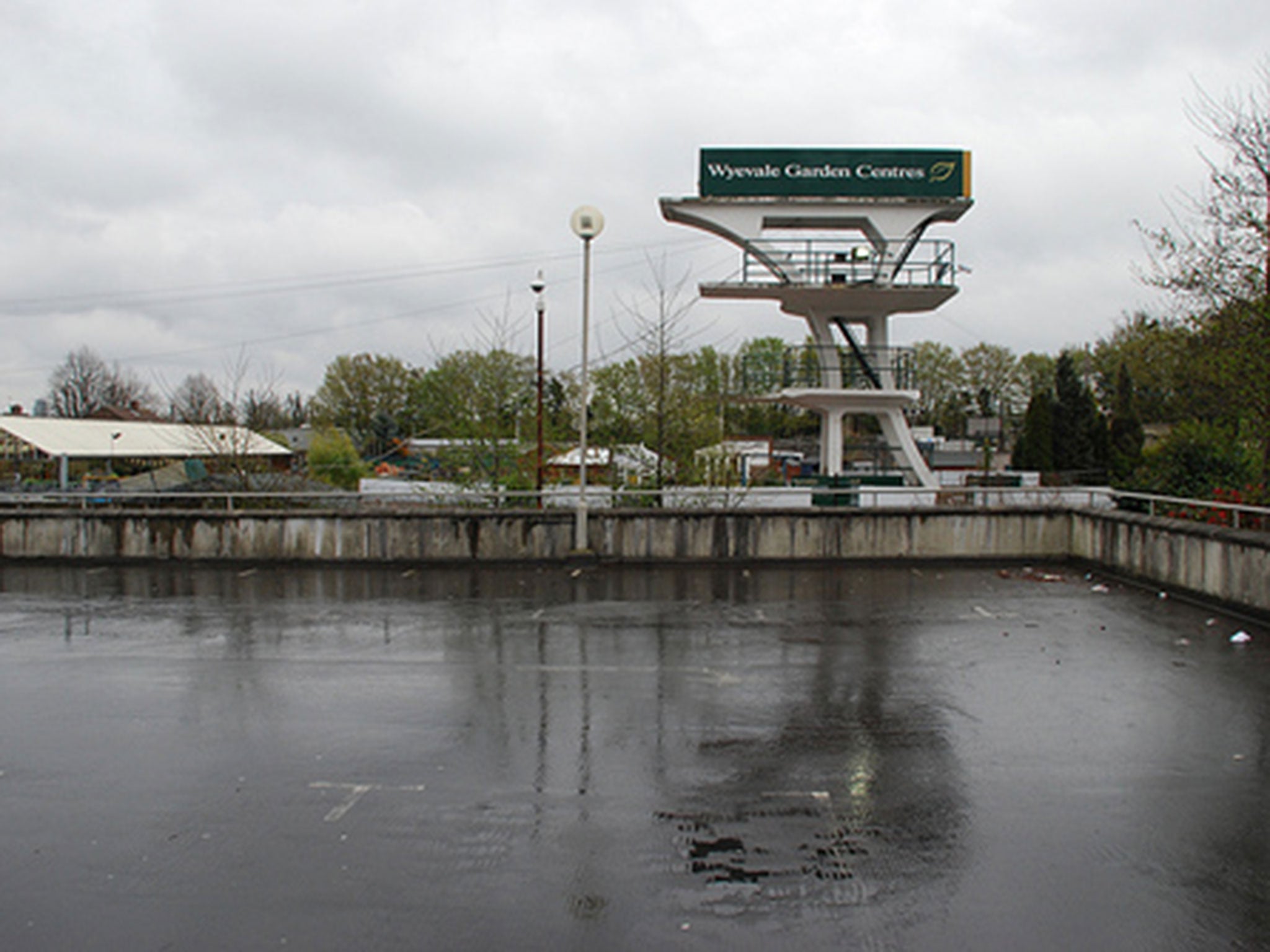Unused diving board given Grade II status
Structure is one of five in London with sporting themes to be listed

In an age when architectural bling – the tallest, the weirdest, the stupidest buildings – dominates the headlines, how cheering that the architectural equivalent of the huddled masses finally get their small moments of glory.
English Heritage has attached its ever-so-humble Grade II listings to five sports structures in London which, to most people, might seem completely unremarkable.
But these new listings are not strictly about architectural quality. They celebrate structures associated with highly localised sporting life.
The newly protected structures include a faintly tragic oddity: the multi-level concrete diving stage at the Purley Way Lido, Croydon. Except that the Art Deco lido has vanished. The lonely structure stands in a garden centre where its once-super-advanced reinforced concrete was the last word in modernity.
The heritage minister, Ed Vaizey, said: “These new listings provide a fascinating snapshot of how sport in the capital was enjoyed in years gone by. Each one of them is worth protecting, not just for their architectural value but also to help preserve the memories of glory, excitement and innocent fun they have provided for so many.”
Or not so innocent. Take York Hall at Bethnal Green: clunky façade, and built in 1929 as a public baths. And yet, for boxing aficionados over the age of 50, it is legendary.
This clammy Edwardian hulk was where Terry Downes (“Did he hurt me? My missus punches harder than that!”) plied his fistic trade, watched by the villainous Kray brothers; and where a stream of future champions including Chris Eubank and Lennox Lewis fought their way up the rankings.
No such unruly behaviour at the ladies’ summer pavilion at Beckenham Tennis Club, where only clones of John Betjeman’s bounding muse, Miss Joan Hunter Dunn – “the warm-handled racket is back in its press” – were welcome. The pavilion, built in 1896, possesses an obdurate charm suited to Betjeman’s swooning lines: “She drove to the club in the late summer haze, Into nine-o’clock Camberley, heavy with bells.”
The former 1930s squash court at Rivercourt House, Hammersmith, is a surprise: it is actually interesting, architecturally – a strange mixture of classical and modernist design, a stolid brick structure with a peculiarly rippled façade held up by slim columns, and bookended with a circular staircase. It’s now a drama studio for a private school.
By contemporary stadium standards, the newly listed grandstand at Summers Lane, Finchley, might seem utterly dreary. Not so. It boasts the oldest surviving cantilevered roof in Britain.
Roger Bowdler, English Heritage’s designation director, said: “From East End boxing halls to concrete diving boards, these listings highlight the variety and scale of the built reminders of our sporting past. They are testament to the love and sheer enthusiasm Londoners have for sport.”
Join our commenting forum
Join thought-provoking conversations, follow other Independent readers and see their replies
0Comments